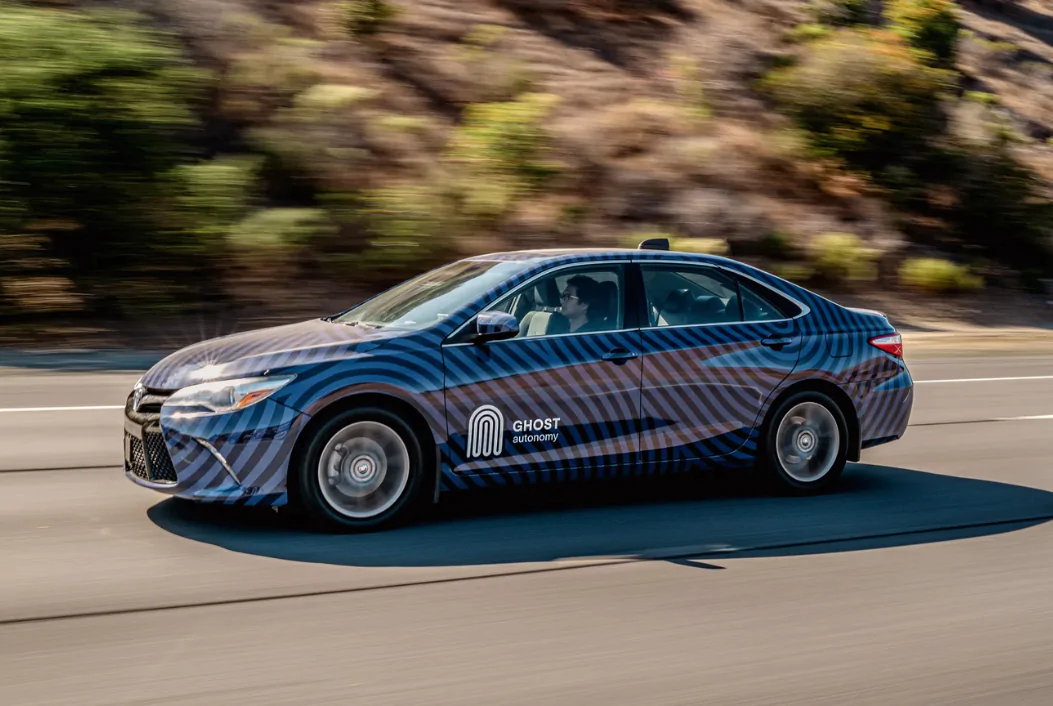What is Ghost Autonomy?
Ghost Autonomy, in the context of AI, refers to the capability of an artificial intelligence system to operate with a degree of autonomy, seemingly making decisions independently within a defined set of rules. The term “Ghost” implies an entity that operates seemingly on its own, guided by predetermined rules and objectives. It is this apparent independence within boundaries that distinguishes Ghost Autonomy from traditional AI.
The Ghost Autonomy Platform is a comprehensive self-driving solution that makes it simple for top automakers to incorporate autonomy into their upcoming models.
Advanced driver assistance systems (ADAS) are being developed by self-driving technology startup Ghost Autonomy for use in commercial fleets. Their technology lowers fleet operating costs and increases safety and efficiency through the use of sensors, cameras, and artificial intelligence. Their goal is to build a more efficient, environmentally friendly, and safe transportation system in the future.
Origins of Ghost Autonomy
TechCrunch has learned that Ghost Autonomy, a startup developing driverless software for automaker partners, has closed.
The startup, which had raised almost $220 million, announced on its website that, as of Wednesday, it was winding down operations globally. The company operated in Mountain View, Dallas, and Sydney, and employed roughly one hundred people.

Evolution of Autonomy in AI:
-
Rule-Based Systems: Traditional AI systems followed pre-defined rules, limiting their ability to adapt to new situations.
-
Machine Learning: Machine learning algorithms enabled AI to learn from data, thereby enhancing its decision-making capabilities. However, the learning process was still bound by the data provided.
How Does Ghost Autonomy Work?
Ghost Autonomy utilizes a combination of machine learning, neural networks, and cognitive science to create AI systems that exhibit a level of autonomy. These systems learn from their environment, analyze situations, and make decisions, all within the boundaries defined by their designers.
1. Sensing Environment
Ghost Autonomy utilizes a sophisticated array of sensors to perceive and understand its environment. These sensors include lidar, radar, cameras, and ultrasonic sensors. Lidar (Light Detection and Ranging) detects objects by emitting laser pulses and measuring the time it takes for the light to return, creating a detailed 3D map of the surroundings. Radar uses radio waves to detect the distance, angle, and velocity of objects. Cameras capture visual data, while ultrasonic sensors measure distance to objects using sound waves.
2. Perception and Mapping
Once the data is collected from the sensors, Ghost Autonomy’s onboard computers process this information to perceive its surroundings accurately. Advanced AI algorithms analyze the sensor data to identify and classify objects, such as vehicles, pedestrians, and cyclists. Through this process, Ghost Autonomy creates a real-time, high-resolution map of the environment, allowing the vehicle to understand its surroundings and make informed decisions.
3. Decision Making
After perceiving the environment, Ghost Autonomy’s decision-making system, powered by artificial intelligence, plans the vehicle’s actions. This involves determining the vehicle’s path, speed, and interaction with other objects in its vicinity. By continuously analyzing the environment and predicting the behavior of other road users, Ghost Autonomy can navigate safely and efficiently in complex urban environments.
4. Control and Execution
Once the decisions are made, Ghost Autonomy controls the vehicle’s movements accordingly. This involves steering, accelerating, and braking to follow the planned trajectory. The control system adjusts the vehicle’s actions in real-time based on the data received from the sensors, ensuring smooth and safe navigation.
5. Constant Learning and Improvement
Ghost Autonomy employs a continuous learning process, where data from each journey is analyzed to improve the system. By integrating feedback from real-world driving scenarios, the AI algorithms can refine their decision-making processes, enhancing the overall performance and safety of autonomous driving.
By integrating cutting-edge technologies and advanced AI algorithms, Ghost Autonomy aims to revolutionize transportation, making autonomous driving a safe and reliable reality.

Key Components of Ghost Autonomy:
-
Machine Learning Algorithms: Ghost Autonomy heavily relies on machine learning algorithms, allowing the system to learn from vast amounts of data.
-
Neural Networks: Neural networks are instrumental in processing and analyzing data, enabling the AI system to make informed decisions.
-
Cognitive Science Principles: Understanding human cognition and decision-making processes helps in creating AI systems that exhibit autonomy.
-
Reinforcement Learning: Reinforcement learning techniques are employed to enable the AI system to learn from trial and error, further enhancing its autonomy.
Applications of Ghost Autonomy
Ghost Autonomy holds immense potential across various industries, revolutionizing the way we interact with AI systems. Some of the notable applications include:
1. Autonomous Vehicles:
Ghost Autonomy can be applied to self-driving cars, enabling them to make real-time decisions based on the surrounding environment. These vehicles can learn from experience and adapt to different driving conditions.
3. Robotics:
Ghost Autonomy can revolutionize the field of robotics, allowing robots to perform complex tasks in unstructured environments. From manufacturing to space exploration, autonomous robots with Ghost Autonomy can significantly increase efficiency and productivity.
OpenAI-backed Ghost Autonomy shuts down

Ghost Autonomy, which had about 100 employees at its offices in Mountain View, Dallas, and Sydney, surprised everyone by announcing what appeared to be a ground-breaking partnership with OpenAI just a few months prior to shutting down. In November, the startup was able to obtain $5 million from the OpenAI Startup Fund, which allowed it to access Azure computing resources provided by Microsoft Corp. That was only a few months after the business closed a $55 million funding round that was not previously disclosed in August.
Co-founder and CEO of Ghost Autonomy John Hayes told TechCrunch that the company was going to test the use of multimodal large language models in self-driving car applications after gaining the support of OpenAI. According to him, LLMs have the potential to improve the reasoning abilities of autonomous driving systems beyond what is currently possible.
The Competitors of Ghost Autonomy
-
Waymo: Waymo is an autonomous driving technology company and a subsidiary of Alphabet Inc. Learn more
-
Cruise LLC: Cruise LLC is an autonomous vehicle subsidiary company of General Motors. Learn more
-
WeRide: WeRide is a Chinese autonomous driving technology company. Learn more
-
Argo AI: Argo AI is an autonomous vehicle technology company headquartered in Pittsburgh, Pennsylvania, United States. Learn more
-
Zoox: Zoox is an American autonomous vehicle company headquartered in Foster City, California, United States. Learn more
Ethical and Societal Implications
While Ghost Autonomy brings forth a plethora of opportunities, it also raises ethical and societal concerns that need to be addressed:
1. Job Displacement:
The implementation of Ghost Autonomy may lead to job displacement in various sectors, raising concerns about unemployment and the need for upskilling the workforce.
2. Privacy and Security:
With AI systems exhibiting a high level of autonomy, there are concerns regarding data privacy and security. Safeguards need to be in place to prevent misuse of personal data.
3. Bias and Fairness:
AI systems with Ghost Autonomy can inadvertently perpetuate biases present in the data they are trained on. Addressing bias and ensuring fairness is crucial in the development and deployment of such systems.
4. Regulatory Framework:
There is a need for a robust regulatory framework to govern the development and deployment of AI systems with Ghost Autonomy. Clear guidelines are essential to ensure transparency and accountability.
The Future of Ghost Autonomy
The future of Ghost Autonomy, an innovative autonomous driving technology, appears promising as it continues to make strides in the field of self-driving vehicles. Leveraging advanced AI and deep learning, Ghost Autonomy aims to revolutionize transportation by offering safe and efficient autonomous driving solutions.
With ongoing research and development, Ghost Autonomy is anticipated to bring forth significant improvements in navigation, safety, and efficiency, ultimately leading to the widespread adoption of self-driving vehicles. By integrating cutting-edge technologies, such as lidar, radar, and cameras, Ghost Autonomy aims to achieve a level of reliability and safety that will reshape the future of transportation. As the industry continues to evolve, Ghost Autonomy remains at the forefront, working towards a future where autonomous vehicles are a common sight on roads worldwide.
In conclusion, Ghost Autonomy stands as a testament to human ingenuity, pushing the boundaries of what AI systems can achieve. While challenges lie ahead, the promise it holds for a more autonomous and intelligent future is undeniable.
Stay tuned as we continue to explore the fascinating world of Ghost Autonomy and its impact on our lives.
Key Takeaways:
- Ghost Autonomy refers to AI systems exhibiting characteristics of autonomy within predefined constraints.
- It draws inspiration from living organisms, allowing AI to adapt and learn from its environment.
- Applications include autonomous vehicles, healthcare, robotics, and virtual assistants.
- Ethical and societal implications include job displacement, privacy concerns, bias, and the need for regulatory frameworks.
- With careful consideration, Ghost Autonomy promises to transform industries and enhance our daily lives.
As we delve deeper into the era of Ghost Autonomy, it’s important to remain informed about its capabilities, applications, and the ethical considerations surrounding its implementation. Subscribe to our newsletter to stay updated on the latest developments in the world of AI and Ghost Autonomy.
Learn more about AI Tools and Latest Blogs.


